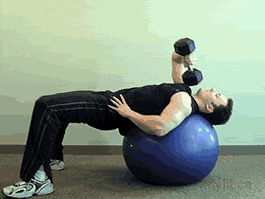Overview
The Romanian Deadlift (RDL) is exercise that targets the hamstrings, glutes and lower back. Unlike the conventional deadlift, the RDL emphasizes a controlled eccentric (lowering) phase and keeps tension on the posterior chain — making it excellent for strength, hypertrophy
Muscles Worked
- Hamstrings: primary mover, works under stretch.
- Glutes: engaged during the lockout.
- Erector spinae (lower back): stabilizes the spine isometrically.
- Core & Grip: support and control the movement.
Common Mistakes
- Rounding the lower back — keep a neutral spine.
- Turning the RDL into a squat — maintain the hinge.
- Letting the bar drift away from legs — keep it close.
- Using excessive weight before mastering form.
| Feature | Romanian Deadlift (RDL) | Conventional Deadlift |
|---|---|---|
| Starting Position | Standing with bar in hands | Bar starts on the floor |
| Knee Bend | Slight bend | More bend (half-squat) |
| Main Movement | hinge (hips go back) | Legs + hinge lift the weight |
| Bar Touches Floor? | No | Yes |
| Primary Muscles | Hamstrings, glutes | Back, quads, glutes, whole body |
| Weight Used | Moderate | Heavy |
| Goal | Build hamstrings & hinge form | Build full-body strength |
| Range of Motion | Short (to shin level) | Full lift from floor to standing |
| Technique Focus | Stretch + control | Power + strength |
Useful Variations
- Dumbbell RDL: Dumbbell Romanian Deadlift (Dumbbell RDL) is a hinge exercise that strengthens the hamstrings, glutes, and lower back. Hold a dumbbell in each hand, keep your knees slightly bent, Lower the dumbbells along your legs until you feel a stretch in your hamstrings, keeping your back straight and core tight. Then return to standing . Dumbbell RDLs improve posterior-chain strength, balance, and stability while allowing a greater range of motion compared to the barbell version. They are excellent for beginners and for building muscle with controlled form.
- Single-leg RDL: corrects imbalances and improves balance.
- Trap-bar RDL:. It targets the hamstrings, glutes, and lower back while reducing stress on the spine thanks to neutral hand positioning. Begin standing inside the bar, hinge your hips back, lower the bar to shin level, and stand tall. It builds strength with safer mechanics. .
- Snatch-grip RDL: The wider grip increases upper-back and trap engagement while still targeting the hamstrings and glutes. Hinge , lower the bar to mid-shin with a straight back, and stand tall. It builds strength, stability, and posterior-chain control.
See Also
Programming Tips
Use RDLs as an accessory lift: 3–5 sets of 4–10 reps for strength, or 8–12+ reps for hypertrophy. Pair with squats or leg presses on separate days to avoid excessive fatigue. Prioritize technique and progressive overload.
Quick Routine Example
Day A
3x5 heavy RDL (2s down, 1s up)
3x8 Romanian Split Squats
2x12 Hamstring curls













